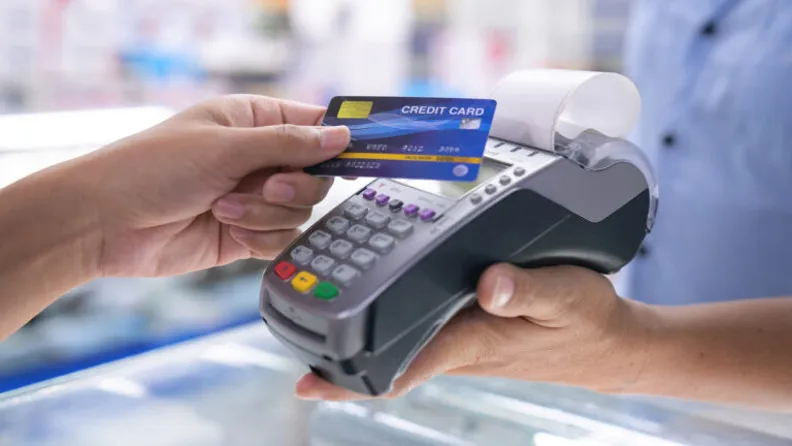Credit cards can offer different types of rewards, from cash back to points or miles. Typically, travel, airline miles, and sometimes even hotel credit cards earn points or miles — though some other cash back credit cards can also earn rewards in the form of points. While points are generally most valuable when traveling — some credit cards offer flexible bonus points that can be redeemed for statement credits, gift cards, and more.
Before you start earning credit card points, you’ll need to compare reward types to determine which is best for you. We’ll explain the differences between rewards programs, learn how to earn credit card points, and how to make the most of your points credit card over time.
What is the difference between points, cash back and miles?
Before applying for a rewards credit card, you should first understand the types of points available and how they are typically used. The table below provides an overview, but you should keep in mind that credit card programs vary in redemption options and values.

How to Earn Credit Card Points
Once you’re approved for a rewards card, you’ll start earning points every time you swipe your card. You’ll earn points for every dollar you spend, and some cards offer higher points for certain spending categories. Just remember to avoid overspending or buying things you wouldn’t normally buy just to earn rewards.
Your Reward Rate Determines Your Results
The amount of credit card points you earn depends primarily on the credit card you choose. The way you earn points on one card may differ from another, depending on the rewards rate.
For example, some cards, like the Citibank Double Cash® Card, offer a fixed interest rate on every dollar spent, regardless of the type of purchase. Others, like the Wells Fargo Autograph℠ Card, offer more rewards in bonus categories and lower rewards rates on other purchases.
Most rewards credit cards also offer a one-time welcome bonus that you can earn once you meet a minimum spending requirement. For example, the Citi Strata Premier℠ Card offers 70,000 points after you spend $4,000 in the first three months of account opening.
These bonuses are worth getting if you can meet the minimum spending requirements through regular purchases and accounts. Doing the math beforehand can also help you make your decision. For example, with the Citi Strata Premier, you’ll need to charge at least $1,334 per month (on average) for the first three months after account opening to earn the bonus. Don’t overspend to get the card’s welcome bonus. If you can’t earn the bonus through your normal spending habits, any extra spending you do will reduce your earnings.
Travel credit cards like the Citi Strata Premier tend to have higher welcome bonuses than rewards credit cards like the Wells Fargo Autograph Travel credit cards often have annual fees, too, which translates to better benefits and higher rewards.
Certain purchases can boost your rewards
You may be able to get more rewards or special discounts at certain retailers through your credit card issuer’s shopping portal.
For example, American Express credit cards come with Amex Offers, a program that lets you earn cash back, extra points, or discounts when you use your card for eligible purchases. To qualify, you simply browse these offers, add the offer to your card, and make qualifying purchases under the offer terms. You can do this using the Amex app.
Many rewards credit cards also offer shopping portals that let you earn more points by “clicking” before you shop at eligible retailers. Examples include AAdvantage eShopping and the Chase Ultimate Rewards shopping portal.
How to make the most of credit card points
Make as many purchases as you can with your rewards credit card, and you’ll undoubtedly earn more points or miles over time. But again, avoid overspending.
Consider these additional tips to get more value from any type of rewards points you have.
- Link a rewards credit card to earn more points . For example, you could pair a fixed-rate cash back credit card with no annual fee with a credit card that earns more points in bonus categories. Use the bonus category card for purchases that earn more points overall, then switch all other purchases to the fixed-rate cash back card.
- Cash back can be redeemed for statement credit or direct deposit, but don’t forget to check out gift card options . If you’re specifically interested in getting cash back, the best redemption option may be a statement credit or direct deposit to your bank account. However, some programs offer gift card redemption rates that exceed one cent per point, at least for special promotions.
- Use points transferred to airlines whenever possible . If you have a travel credit card that allows you to earn flexible points, you’ll often get the best value by transferring your points to airline or hotel partners. That said, you can also compare the redemption value you’d get if you booked similar flights through the credit card program’s travel portal. To find out how much your points are worth, divide the dollar cost by the number of points needed to cover your travel expenses.
- Never carry a balance on a credit card . The only way to “avoid” credit card points is to pay your credit card bill in full each month and avoid carrying a balance. With the average credit card APR over 20%, interest charges can quickly accumulate and reduce any rewards you earn.
How to find out how much your points are worth
Generally speaking, your credit card issuer will tell you what your points or cash back will be worth when you redeem them. They will at least give you a ballpark range for the various relay options. American Express, for example, lists its redemption values very clearly.
If you can’t find the information you need and want to know the value of your mortgage, it can be helpful to do some math. For example, if you are asked to redeem 2,500 points for a $25 gift card, each point is worth 1 cent (25 / 2,500 = 0.01).
The same simple calculation applies if you are asked to use 40,000 points to pay for a hotel stay ($200 in cash). In this case, you would earn 0.5 cents per point ($200 / 40,000 = 0.005).
If you redeem 30,000 airline miles plus $6 in airline taxes for a $400 flight, you’ll need to subtract the airline taxes to calculate the point value. In this case, you’ll get a value of about 1.3 cents per mile ($400 – $6) / 30,000 = 0.013).
Bottom Line
How you use your reward points depends on the credit card you apply for and the redemption options it offers. For example, some credit cards only earn cash back, while others let you earn miles through airline or hotel loyalty points, and the points can be used for a variety of redemption options of varying values.
With all of this in mind, it makes sense to research rewards credit cards thoroughly before applying. Choose the card that best fits your spending habits and offers the redemption options that most appeal to you.
*All information about the Marriott Bonvoy Unlimited Credit Card was collected independently by CNET and has not been verified by the issuer.
The editorial content of this page is based solely on the objective, independent assessment of our authors and is not influenced by advertising or partnerships. It is not provided or commissioned by any third party. However, we may receive compensation when you click on links to products or services provided by our partners.


